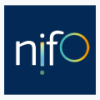On its way to further evolve the electronic exchange between public authorities and citizens; Denmark’s work to prepare and procure a Digital Post solution has started. The so called Next generation Digital Post (NgDP) will emerge from this process.
Under the responsibility of the Danish Agency for Digitisation, Digital Post is the national electronic mailbox for messages and communications implemented by the Danish public authorities. As one of the initiatives about digital communication in Denmark, Digital Post aims the transition to mandatory digital exchange from all public entities to all individuals (conditions are to be above the age of 15 and registered with a Danish civil registration number). Users can access the system via two secure websites – borger.dk or e-Boks.dk.
Digital exchanges cover any letters from hospital, pension statements, information about state education support (SU), changes to housing benefits, replies to applications for childcare or letters from the Danish Tax and Customs Administration (SKAT).
Policy Context
In Denmark, the Digital Strategy 2016-2020 sets the course for Danish public sector digitisation efforts and their interaction with businesses and industry. The strategy aims to build the basis for a strong and secure digital Denmark.
According to the Danish Public Digital Post Act, public authorities are entitled to send digital only messages rather than sending paper-based letters, with equal status and effect.
Citizens are required to use digital self-service for a wide range of services, and to digitally receive letters, notices and messages from public authorities. Some of the most recently introduced initiatives include mandatory Digital Post and mandatory online self-service for individuals and businesses. All mail sent has the same legal effect as paper mail: it is non-repudiable and involves personal liability.
The Danish Agency for Digitisation is responsible for supplying a national solution to manage the exchange of digital messages. The agency, globally in charge of the digitisation of Denmark, implements the government's digital initiatives in the public sector. This Agency has been established in 2011 and is supervised by the Ministry of Finance.
Description of target users and groups
The Danish Public Digital Post gives to authorities the ability to send digital-only messages, letters, documents to all Danish citizens and businesses.
About. 4,3 million Danish citizens and 680.000 businesses use and receive Digital Post today. Approximatively 400 national public authorities are part of the solution and send Digital Post messages via the solution.
The volume of exchanged messages increased the last years. From 48 million messages in 2014, the figure passed to 86 million in 2015 and reached 71.5 million in 2016 (as of 1st September).

Description of the way to implement the initiative
The Agency for Digitisation ran a consultation process from mid-September to mid-October 2016. All stakeholders were invited to participate to the requirement specification and to the launching of the tendering procedure for the next generation of the system (see here). The objective of this phase is to provide valuable input to build the next generation of Digital Post.
Therefore, perspectives such as user experience, IT architecture, timetable and procurement approach have been discussed. The input from stakeholder organisations, such as for example the Disabled People’s Organisations Denmark, is also used to identify specific needs for adjusting and making solutions available.
Moreover, a special campaign has been spread over social networks for the young citizens. They are targeted, despite their known digital skills, for having a bigger awareness on the initiative. In this sense, they are encouraged to share new ideas to improve the service.
Technology solution
The precondition for a more digital Danish public sector is a robust and carefully planned ICT infrastructure with performant and reliable technical solutions. In order to make communication and information exchange between the public sector, businesses and citizens as easy as possible, the Agency for Digitisation of Denmark supports a variety of coherent digital tools and solutions. This ranges from the implementation of an electronic signature to specific websites aimed at citizens. For instance, in order to access the Digital Post, user must log on with the digital signature NemID. This implements a single login for public websites, online banking and many other websites and services. Users of NemID are assigned a unique ID number. It is used as a username in addition to their CPR-Number (the Danish Personal Identification number) or a user-defined username.
Main results, benefits and impacts
One of the valuable impact of the Digital Post system is the reduced queue and no-show for the scheduled appointment with public authorities.
Among the many advantages consequent to an increased digital communication with the public sector, we pinpoint the following ones:
- Personal and secure, because Digital Post it is linked to individuals´ NemID and civil registration number (CPR number);
- Anywhere/Anytime, as the service can be accessed and read on any computer with internet-access;
- Quick and inexpensive way of communicating for both citizens and the public sector.
As an output of the open consultation ran at the end of 2016, an additional use case has been analysed by the Danish parliament after the proposition of the Ministry of Justice. By digitalising the Court summonses delivery, the expected benefits is to overcome the major cause of proceeding dropping and to free up time of 25 to 30 police officers.
The project investment is partially returned thanks to the decreasing of expenses in paper for public administrations and in amount of deliveries to be taken in charge by standard Post service. Moreover, when the welfare system will be fully implemented the no-show at scheduled visits will be reduced and warning concerning cancellations could be sent through digital post and immediately read.
Lessons learnt
Capitalising on the so far gathered feedback, one of the conclusion is that this project encourages to spread digitalisation of general public services massively in the population. This should be specifically targeting the part of Danish citizens which is currently less digital-oriented and need more support to embrace these new services.
Scope: National

